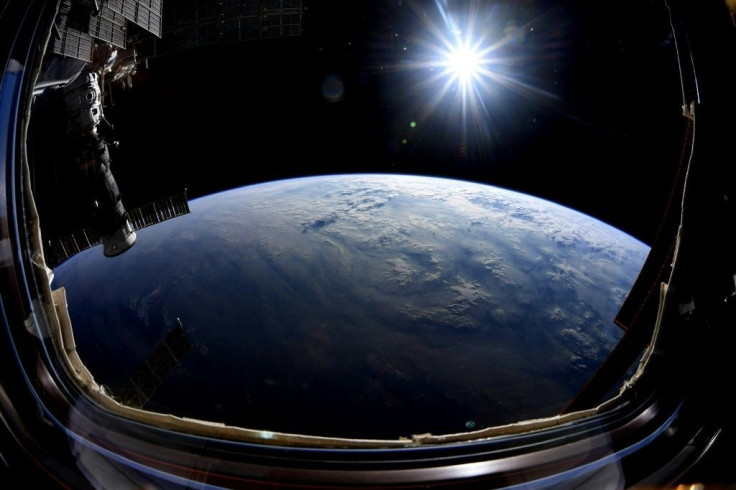Astronaut Captures Striking Photos Of Recent Lunar Eclipse From ISS
KEY POINTS
- ESA astronaut Samantha Cristoforetti captured incredible photos of the recent eclipse
- One of them even features the Earth's stunning glow
- There will be two more eclipses later in the year
The recent lunar eclipse stunned viewers everywhere. Aboard the International Space Station (ISS), an astronaut even snapped incredible photos of the Moon looking like it was playing hide and seek.
The Earth passed between the Sun and the Moon from the night of May 15 to early May 16, creating a stunning lunar eclipse. While many people caught a glimpse of the Moon turning an eerie shade of red, European Space Agency (ESA) astronaut Samantha Cristoforetti caught a rather unique view of the event while aboard the ISS.
In a set of photos Cristoforetti shared on Twitter, one can see the Moon seemingly hiding behind the ISS' solar panels. In one of the images, the Moon can even be seen against the Earth's stunning glow.
"A partially eclipsed Moon playing hide-and-seek with our solar panel," Cristoforetti wrote.
A partially eclipsed Moon playing hide-and-seek with our solar panel. / Eclissi parziale della luna che gioca a nascondino con il nostro pannello solare. 🌘 #lunareclipse2022 #BloodMoon #MissionMinerva pic.twitter.com/P7oYFcfTdA
— Samantha Cristoforetti (@AstroSamantha) May 16, 2022
Lunar eclipses happen during the full Moon phase when the Earth's shadow essentially obscures the Moon. During total lunar eclipses, the Moon gets an eerie reddish hue for a few hours as the colors with shorter wavelengths (blues, violets) scatter easier than reds and oranges, which have a longer wavelength, NASA explained.
By comparison, the alignment between the celestial bodies during a partial lunar eclipse is "imperfect" and thus the shadow only covers a part of the Moon. Penumbral eclipses are even harder to spot because they only dim the Moon slightly.
Those who didn't get a chance to see the eclipse live can enjoy the photos shared by Cristoforetti and those shared by the many who got to witness it. They also still have a chance to see other eclipses later in the year, as the recent eclipse was the second of four eclipses expected in 2022. There will be a partial solar eclipse in October and another total lunar eclipse in November.
As for Cristoforetti, she is currently on her second mission aboard the ISS, dubbed Minerva. She will be performing various European and international experiments during her stint. She will also be the lead responsible for "all activities" in the U.S. Orbital Segment, according to the ESA.
"As a seasoned space flyer, Samantha will continue to represent Europe and support European experiments aboard the Space Station throughout her Minerva mission," ESA director general Josef Aschbacher said in April after Cristoforetti and the rest of Crew-4 arrived at the ISS. "It is these experiments that will aid European innovation on Earth as we seek to build our industry, preserve our environment and explore even farther in space."

© Copyright IBTimes 2024. All rights reserved.






















